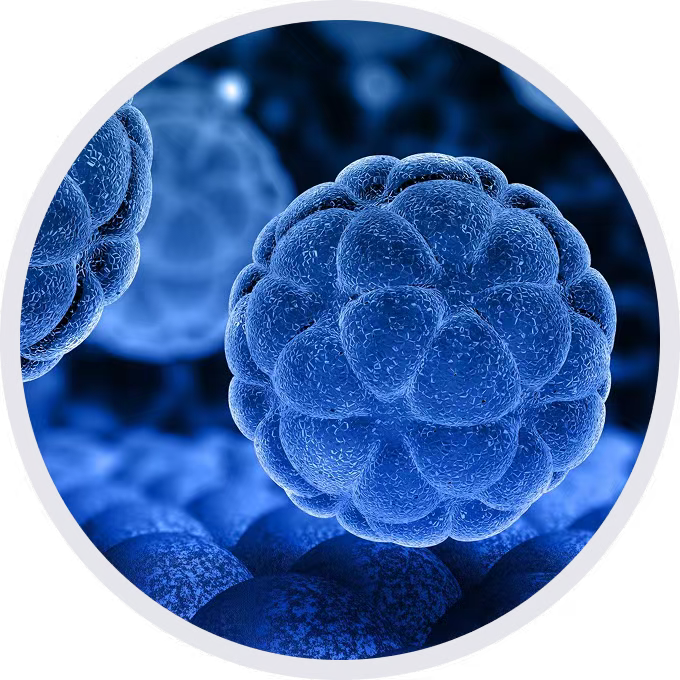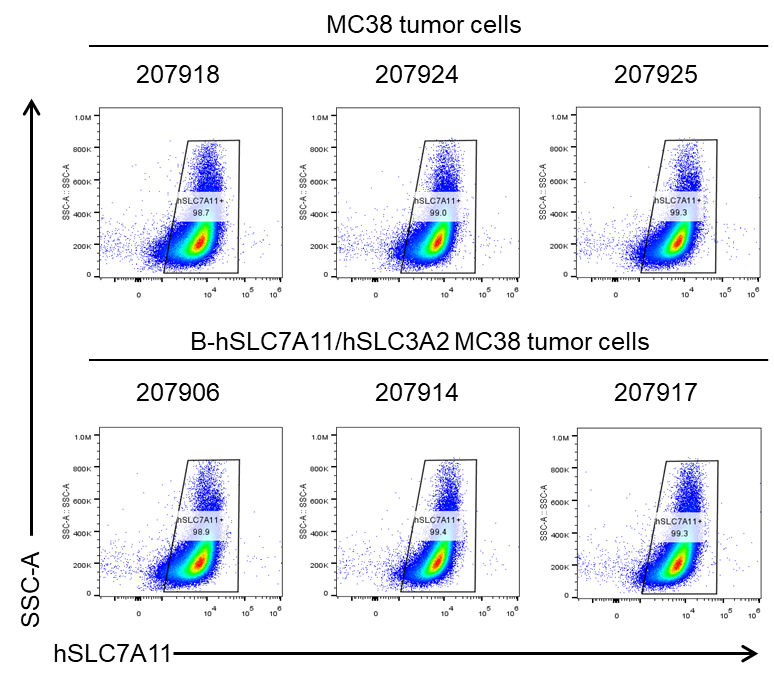
• 321850

| Product name | B-hSLC7A11/hSLC3A2 MC38 |
|---|---|
| Catalog number | 321850 |
| Strain background | C57BL/6 |
| NCBI gene ID | 23657,6520 (Human) |
| Chromosome | 3, 19 |
| Aliases | 4F2; 4F2HC; 4T2HC; CD98; CD98HC; MDU1; NACAE; CCBR1; xCT; CCBR1; 4F2 |
| Tissue | Colon |
| Disease | Colon carcinoma |

Human SLC7A11 and human SLC3A2 expression analysis in B-hSLC7A11/hSLC3A2 MC38 by flow cytometry. Single cell suspensions from wild-type MC38 and B-hSLC7A11/hSLC3A2 MC38 cultures were stained with species-specific anti-human SLC7A11 antibody and anti-human SLC3A2 (Ab1 and Ab2 were provided by the client.). Human SLC7A11 was detected on the surface of B-hSLC7A11/hSLC3A2 MC38 cells but not wild-type MC38 cells(A). Human SLC3A2 was highly expressed in the tumor cells(B). The 2-G02 clone of B-hSLC7A11/hSLC3A2 MC38 cells was used for in vivo experiments.

Human SLC7A11 expression evaluated in B-hSLC7A11/hSLC3A2 MC38 tumor cells by flow cytometry. B-hSLC7A11/hSLC3A2 MC38 cells were subcutaneously transplanted into C57BL/6 mice (female, 7-week-old, n=6), and on 35 days post inoculation, tumor cells were harvested and assessed for human SLC7A11 expression (LSBio, LS‑C142125) by flow cytometry. Due to the cross-reactivity of this antibody between humans and mice, the human SLC7A11 was detected in both the wild-type MC38 and the B-hSLC7A11/hSLC3A2 MC38. Therefore, B-hSLC7A11/hSLC3A2 MC38 can be used for in vivo efficacy studies of antibody therapeutics.

Subcutaneous homograft tumor growth of B-hSLC7A11/hSLC3A2 MC38 cells. B-hSLC7A11/hSLC3A2 MC38 cells (5x105) and wild-type MC38 cells (5×105) were subcutaneously implanted into C57BL/6 mice (female, 7-week-old, n=6). Tumor volume and body weight were measured three times a week. (A) Average tumor volume ± SEM. (B) Body weight (Mean± SEM). Volume was expressed in mm3 using the formula: V=0.5 X long diameter X short diameter2. As shown in panel A, B-hSLC7A11/hSLC3A2 MC38 cells were able to establish tumors in vivo and can be used for efficacy studies.